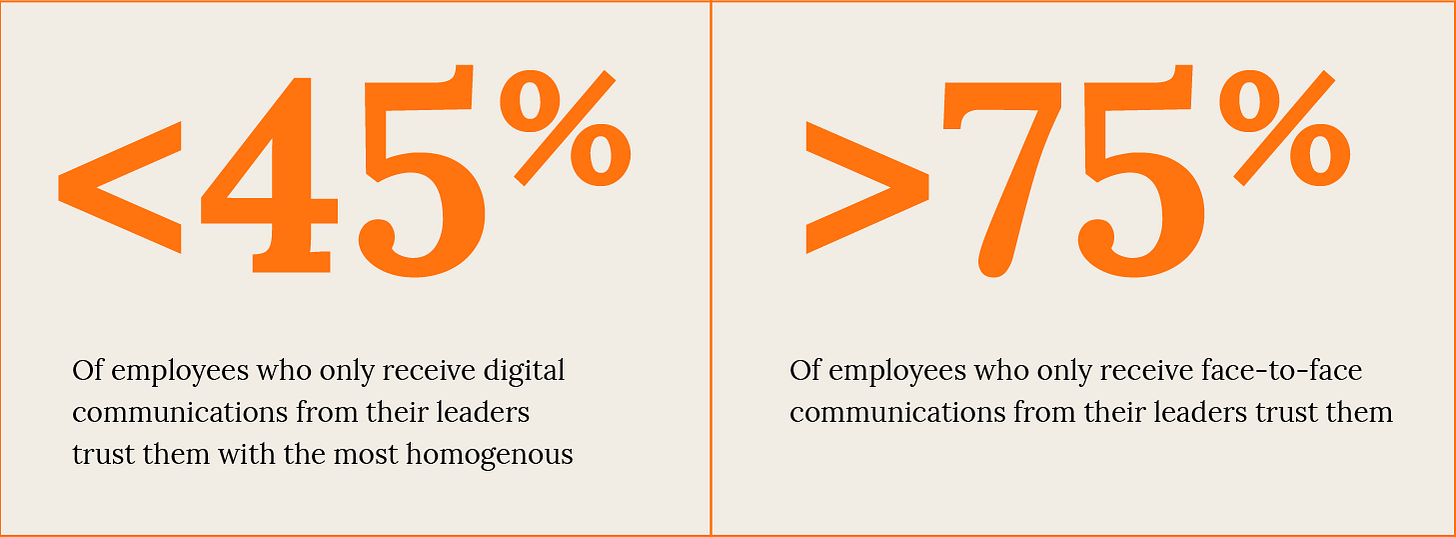How CEOs can set the tone for a fearless, trusting organisation
A CEO’s greatest tool isn’t strategy or vision—it’s trust. Without it, no amount of messaging, policy, or corporate spin will convince employees to speak up, lean in, or give their best.
The most fundamental, powerful and enduring fuel for performance is a feeling of safety and trust.
Bob Chapman, Author of ‘Everybody Matters’
When creating a fearless organisation, it all starts with the CEO – and their C-suite senior leadership team. They help set the stage for creating a culture of psychological safety at an organisational-wide level. And, through the right role modelling, that senior-level behaviour set helps fosters and embed a culture in real terms of fearlessness in an organisation.
It is the accumulated practice and behaviours of leaders and people managers that creates wider psychological safety within a business.
In a 2018 study of Greek companies, 83% of Greek CEOs considered themselves highly approachable to their colleagues, a fact that only 47% of managers felt similarly about. 25% of managers felt that their CEO wasn’t approachable at all…with only 4% of CEOs feeling that was the case.
This mirrors data from a Karian and Box study in 2019. It showed that fewer than two in five employees felt their senior leadership teams were open and approachable. Those employees who did feel their leaders are approachable exhibited levels of psychological safety three times as high than those that did not (83% vs 28%).
The study shows us why leaders need to be able to have open conversations that promote genuine engagement in their teams – and the kind of trusting relationships that reduce fear. Being challenged and open to honest feedback is a foundational requirement for creating a psychologically safe workplace. It is critical to establishing an open and non-prejudiced conversation that helps employees feel free to act without the fear of reprisal.
Open conversations and timely, transparent communication must be the goal of organisations looking to unlock productivity by embedding psychological safety.
The problem of trust
The problem is that only just over half of UK employees trust the CEO of their employer? That was one of the findings from the 2024 by the Institute of Internal Communications (IOIC) and Ipsos Karian and Box. Only slightly more (58%) trust their employer’s senior leadership team.
That means between two in five and half of the UK workforce do not believe what they’re being told by their employer.
This is not overly surprising. Nonetheless, it is still a travesty. A lack of trust within the workplace has been shown by a range of studies to affect employee productivity, increased workplace absence, inefficient workload management and ultimately missing performance KPIs.
Across 54% of companies surveyed in their Strategy Competitive Agility Index, Accenture highlighted a material drop in trust, with revenues at stake equating to – at least - $180Bn.
The Neuroscience of Trust by Paul J. Zak, published in the Harvard Business Review, is only one of a number of studies that show why leader-driven trust matters. Zak's research found that trust stimulates the release of oxytocin, which facilitates collaboration and teamwork.
However, Ipsos Karian and Box has also shown ‘how’ the type of leadership communication can influence levels of trust. The same collaboration between the IOIC and Ipsos a year earlier (IC2023) showed that the quality of the interaction leaders and employees can help build trust.
Specifically, facetime and verbal communication in person communications matters a lot. The data shows that fewer than 50% of employees who only receive digital communications (emails, intranet articles, blogs etc) trust their leaders. Face-to-face leadership communications elicit the highest levels of trust levels - over 70%.
Employees are craving a more participatory role in their workplace. Traditional ‘top-down’ cascading of business messages is no longer applicable as employees expect greater transparency and high levels of collaboration.





